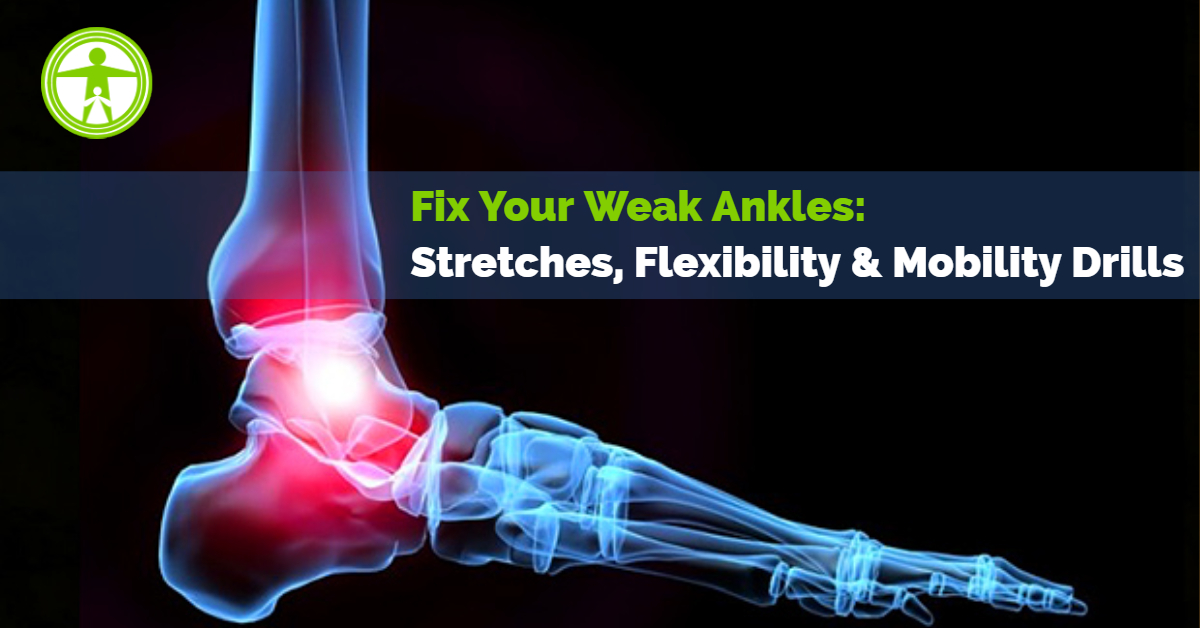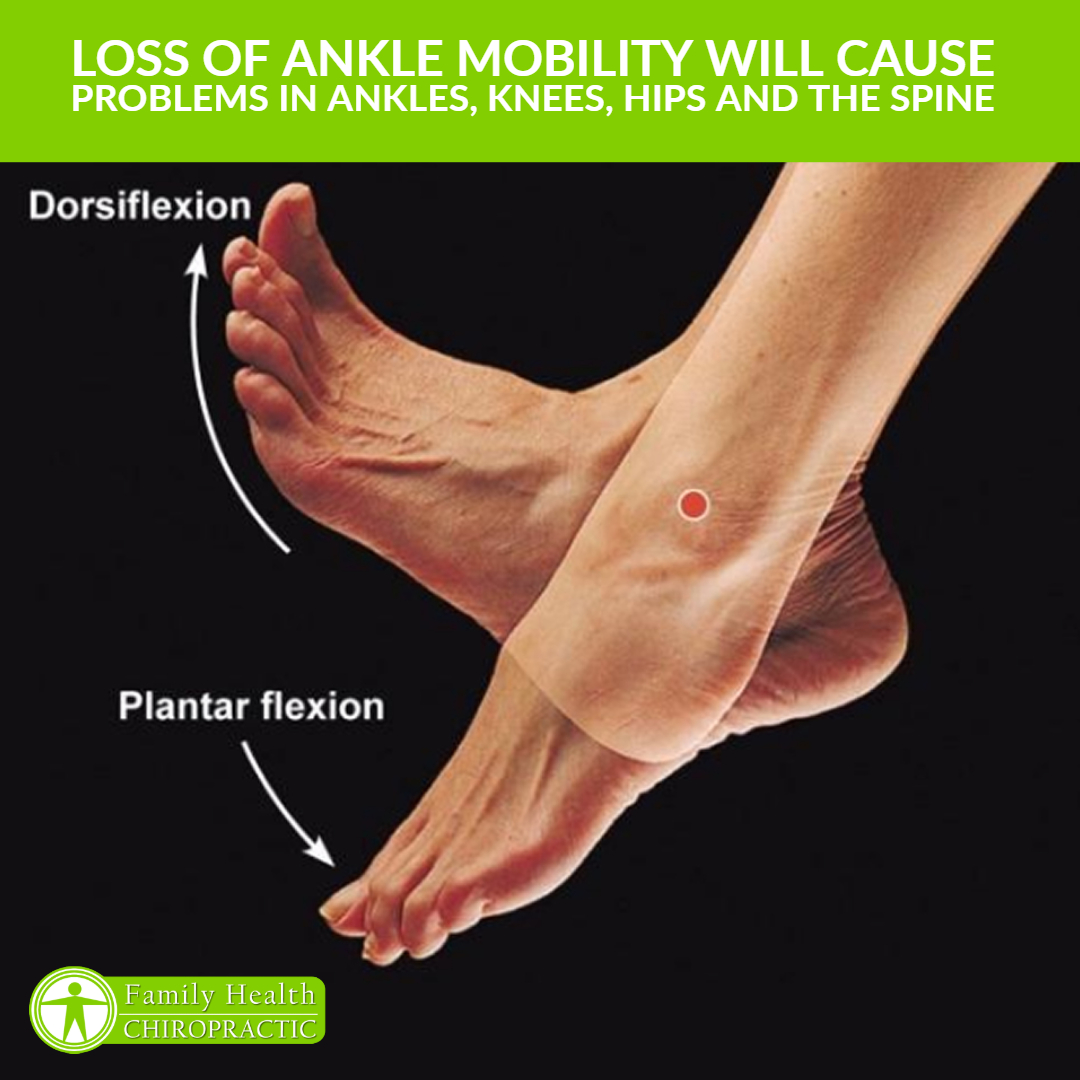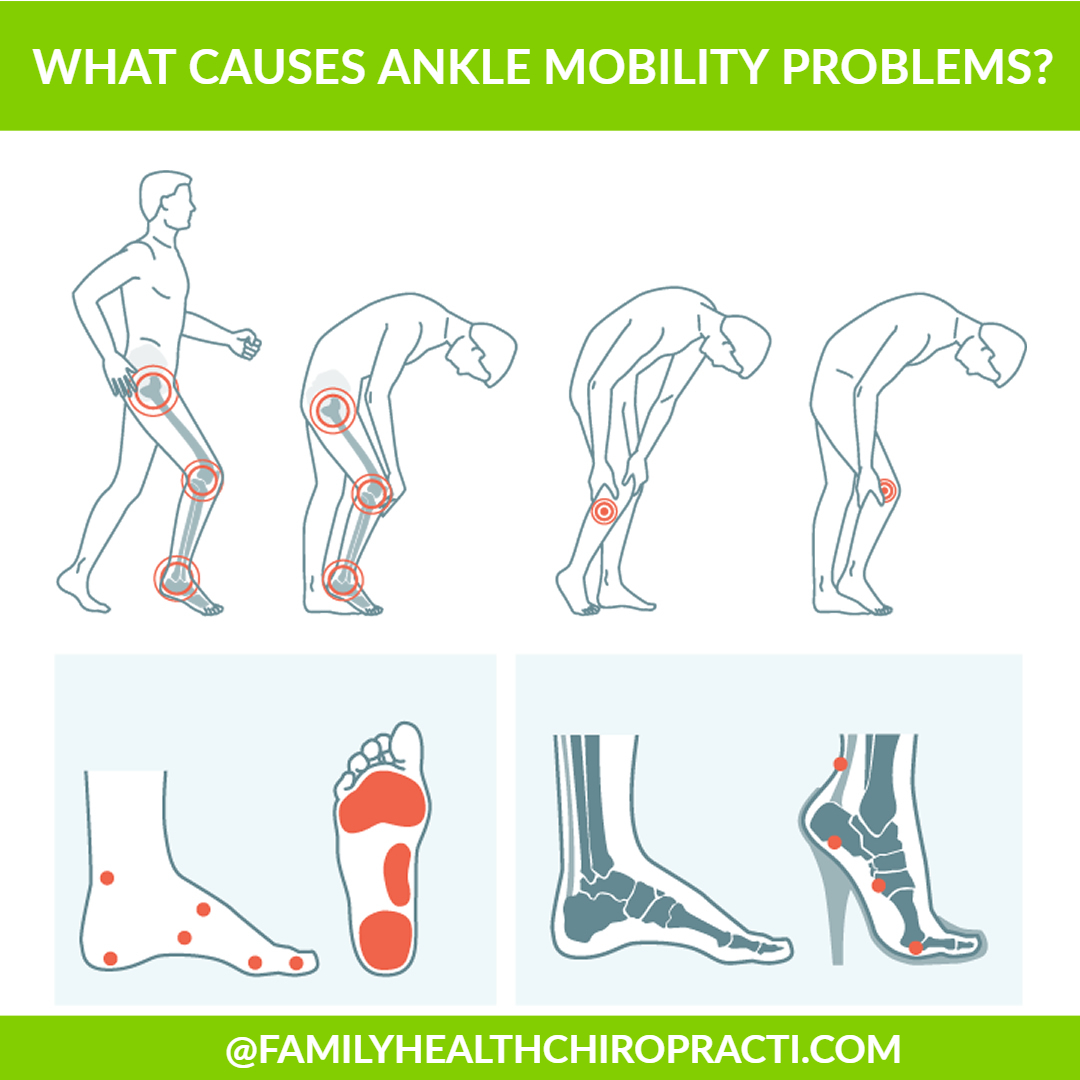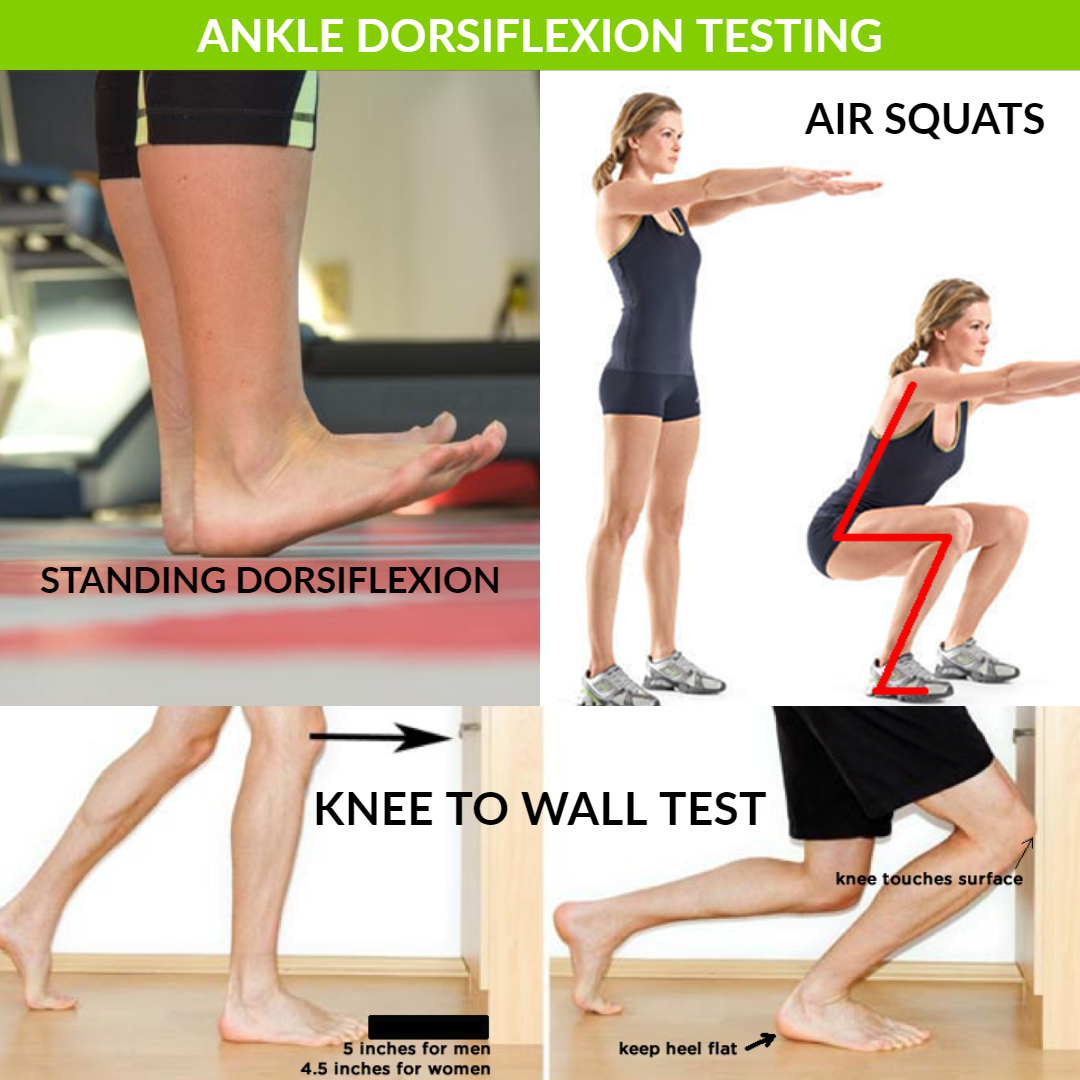The ankle may be one of the most ignored joints (second to the wrist) in terms of physical health, performance, flexibility and injury prevention.
One of the most common issues I see in both athletes and the general population is a lack of ankle mobility – specifically, something that's called dorsiflexion range-of-motion.
Why is this important?
Your ankles allow for almost every movement in life from – sprinting, lunging, squatting, cycling, jogging and grabbing heavy things from the floor – ankle dorsiflexion is necessary.
Ankle dorsiflexion is what allows the knees to go over the toes without lifting the heel. If you don’t have it, then you have to compensate your movement… and it's usually not going to end well.
This lack of ankle mobility negatively affects knee function, hips, the low back and even your shoulders.
Research has shown that a lack of ankle mobility can increase rotational torque at the knee. This falls right in line with the joint-by-joint school of thought with respect to training; if you lock up a joint that should be mobile, the body will look elsewhere to create that range-of-motion.
This definitely applies to what happens to the low back (lumbar spine) during squatting in a person with an ankle (or hip) mobility deficit.
If someone can’t get sufficient dorsiflexion (or hip flexion and internal rotation), they’ll look to the lumbar spine to get that range of motion by rounding (lumbar flexion). We know that combining lumbar flexion with compressive loading is a big-time no-no, so it’s important to realize that folks with considerable ankle mobility restrictions may need to modify or eliminate squatting altogether.
What Causes Poor Ankle Mobility?
Poor dorsiflexion can be attributed to a number of factors.
These include:
- Flexibility (passive range of motion) with the muscles in and around the calf.
- Ankle joint restriction. This can be due to a tight joint capsule and/or scar tissue and adhesions in the joint from prior injuries or surgeries.
- Anterior pelvic tilt posture. Bad posture (how often do you slouch when you’re sitting at your desk?) brings the body’s center of mass forward, which causes the ankle to plantar flex in an attempt to balance it out.
- Other injuries in the lower body. If someone is experiencing knee, hip or back pain as well as any other muscle soreness in the lower body, they will instinctively limp or modify their movement to avoid discomfort. Doing so will cause the ankle joint to tighten and limit it’s range of motion.
- Frequently wearing shoes with elevated heels. Most shoes have a heel that is slightly higher than the front of the shoe, so wearing them excessively will result in a progressive loss of flexibility.
How to test your ankle mobility
So how do you know if you have poor ankle mobility? There are a couple of ways to find out:
- Perform a basic air squat a few times and have someone watch you. A telltale sign of poor mobility is if your heels routinely come off the ground.
- Stand straight with your feet together. Can you lift the ball of your foot off the ground without moving your body
The most important test when it comes to measuring the integrity of the leg and foot is the ankle dorsiflexion test or the Knee to Wall Test.
It is the most functional range of motion for the ankle because as human beings, we walk arguably more than any other activity we do (excluding sitting and sleeping).
- Start by taking a measuring tape or ruler and measuring 5 inches out for men and 4.5 inches out for women.
- Line your toes up to the 5 or 4.5 in mark (distance from the wall) and try to touch your knee to the wall without lifting your heel.
- If you cannot touch the wall, move your toes closer to the wall by 1 inch and then perform again.
- A normal test result is 5 inches or more for men and 4.5 inches or more for women.
What is the Knee to Wall Test assessing?
The mobility of your calf, ankle, and foot.
These structures include bone, ligaments, tendons, cartilage, and muscles.
What Specific Dysfunctions are relevant here?
Unlike the lumbar spine that tends to accumulate many structural dysfunctions, the ankle tends to be structurally healthy. That’s good news for us!
This means that the majority of individuals with restricted ankles should be able to increase range of motion except when trauma has caused permanent damage.
Relevant muscles include:
- tibialis posterior – the stretch is in the middle of the calf, deep.
- flexor digitorum longus – the stretch is in the medial portion of the calf, deep.
- flexor hallucis longus – the stretch is in the lateral calf, deep.
- posterior tibiotalar ligament – If this is problematic, you’ll feel a pinch on the front of the ankle. This ligament cannot be stretched or mobilized. The only way to affect this tissue is with a manual therapist who would take the small edge of a finger and put it under the malleolus to treat it.
- posterior talofibular ligament – see “posterior tibiotalar ligament” above.
- soleus – This muscle, while relevant on occasion, is not as significant as the 1st 5 structures above. What this means for you if you’re mobilizing, go as deep as possible. The structures above are deep to the soleus. Use an object with a smaller surface area – lax ball, or even a golf ball – than an object with a larger surface area – foam roller.
Completely irrelevant muscles include:
- gastrocnemius (This muscle is stretched with the knee straight. Don’t bother stretching this muscle as it almost never has adhesion.)
How to Fix Poor Ankle Mobility
There are a number of mobility and stretching resources for you to experiment with to improve your ankle dorsiflexion.
The short answer is spend more time on conscious stretching, flexibility and mobility training. This does not include the 5 minute warmup or quick stretch set you do before or after a workout.
Stretching for 30 to 60 seconds is not a Stretch!
One meta-analysis done in 2006 supports the notion that static stretching from 5-30 minutes can create small improvements in ankle dorsiflexion.
Use whatever tools you’d like to use for a month, stretching about from 5-30 minutes a day, for 3 days a week, for a month.
After a month, re-test.
If you’ve gained range of motion, wonderful! Wash, rinse, repeat, and continue stretching.
Here's a list of ankle mobility exercises you can work on:
90-90 Neurodynamic Mobility
If you're a patient of mine or you've been reading my articles for some time then you know how important nerve function is to me. So it should go without saying that we should be optimizing nerve function.
This exercise helps to make sure that nerves are sliding around properly. Regardless of whether this improves ankle mobility specifically, it's still good to do.
Static Stretch With Contraction
Our body responds to stretching by reflexively contracting muscles around the joint to protect it.
After this, there is an elastic component that takes up the initial force. For this reason, it takes at least 2 minutes of a consistent stretch to truly make a change in the tissues.
However, once this change is made, it doesn’t mean your body will use it. This is why you need to contract the muscles on both sides of the joints to teach your brain and nervous system how to use the new range.
Follow this protocol to improve ankle dorsiflexion range of motion.
Eccentric Heel Drops
This exercise will not only help with increasing range of motion, but is great for Achilles tendinopathies!
Seated Active Ankle Dorsiflexion
Not only do we want to improve the range and strength of the back side of our lower leg, we should also work on the front. This front side strength is responsible for maintaining and using the new ankle mobility.
Foot Wave Dissociation
Do you have claw toes? Do your feet cramp up often? If so, you should perform this dissociation exercise to strengthen the anterior tibialis. It will also help to improve motor control of the ankle.
Banded Ankle Joint Mobility
For anyone wanting to improve squat mechanics, give this exercise a try. It biases the forces towards the joint as opposed to the muscles.
Pistol Squat Ankle Mobilization
Finally, this exercise is more aggressive but great for ankle joint mobilization. It puts a great deal of force through the ankle joint to improve the range of motion. For those looking to improve their mobility in advanced movements, such as a pistol squat, this could be a great exercise.






